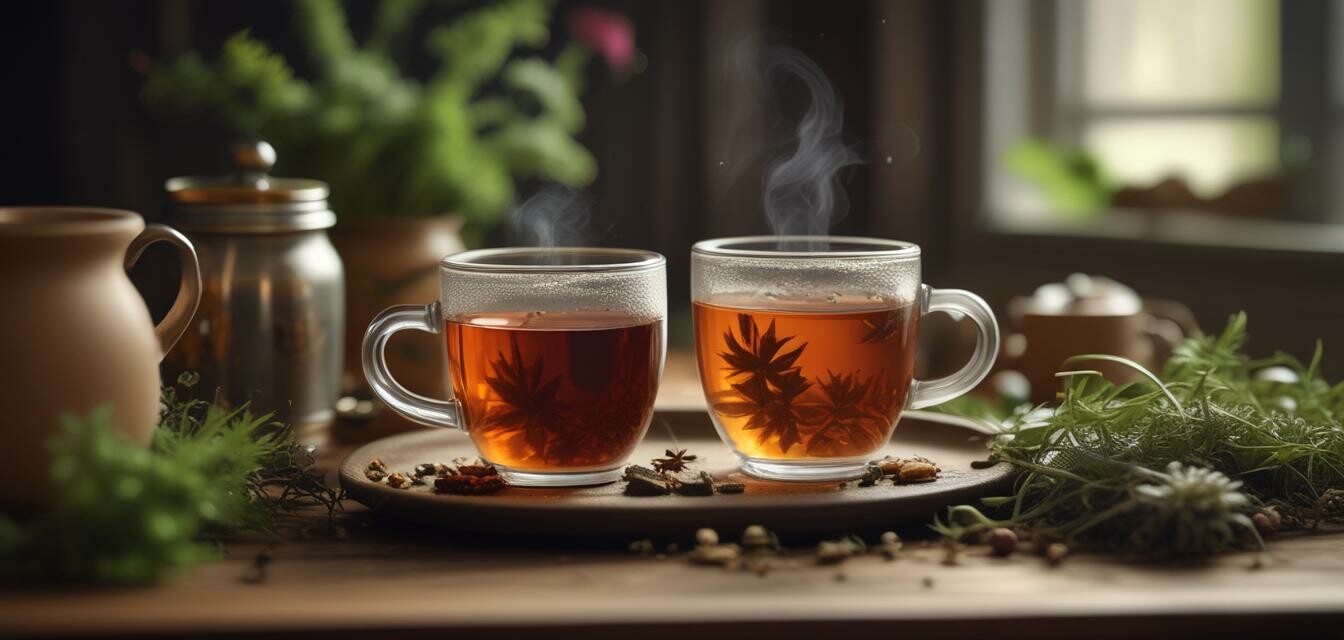
Crafting Your Perfect Herbal Tea Blend for Relaxation
Key Takeaways
- Herbal tea blends can promote relaxation and well-being.
- Choose the right herbs for your desired effects.
- Brewing techniques play a crucial role in extraction and flavor.
- Creating your blend allows for personalization.
Herbal tea has long been cherished for its calming effects and various wellness benefits. Whether you’re unwinding after a long day or preparing for a restful night, crafting your own herbal tea blend can enhance your relaxation routine. In this article, we’ll explore the steps to create the perfect tea blend tailored to your taste and relaxation needs, along with some recommended herbs and techniques.
1. Understanding the Benefits of Herbal Tea
Herbal teas offer numerous benefits beyond hydration. Many herbs have unique properties that can help promote relaxation and a sense of calm. Here are just a few examples:
- Chamomile: Known for its soothing aroma and gentle flavor.
- Lavender: Renowned for its calming scent to help ease tension.
- Passionflower: Used to pacify anxiety and promote tranquility.
- Valerian Root: Often utilized for its relaxing properties.
2. Choosing the Right Herbs
When crafting your herbal tea blend, it’s essential to select herbs that align with your relaxation goals. Here’s a selection of herbs great for creating calming tea blends:
| Herb | Description | Flavor Profile |
|---|---|---|
| Chamomile | Helps to soothe nerves and relax the mind. | Light and floral |
| Lavender | Offers a delightful, calming aroma. | Floral with earthy undertones |
| Passionflower | Can act as a natural relaxant. | Herbaceous, somewhat sweet |
| Valerian Root | Traditionally used for promoting relaxation. | Strong and earthy |
| Mint | Increases overall comfort and freshness. | Cool and refreshing |
3. Crafting Your Tea Blend
Now that you have your herbs selected, it’s time to create your blend. Follow these simple steps:
- Decide on your base: Begin with a primary herb (e.g., chamomile) that will be the main flavor.
- Add supporting herbs: Choose one or two complementary herbs (like lavender and mint) to enhance the flavor and benefits.
- Consider the ratios: A good starting point is one part base herb to half part each supporting herb.
- Tweak to taste: Brew a small test batch, adjust herbs or ratios as needed.
4. Brewing Techniques
Brewing your herbal tea correctly can greatly impact its flavor and effectiveness. Here are some brewing tips:
- Use freshly boiled water and allow it to cool slightly before adding to the tea blend.
- Steep for about 5-10 minutes, depending on the herbs used.
- Taste the tea before removing the herbs to find your desired strength.
5. Exploring Herbal Remedies for Wellness
In addition to crafting your herbal tea blend, consider exploring other wellness practices. A great resource for natural remedies is the Barbara O’Neill Natural Herbal Remedies Complete Collection. This guide offers a range of organic recipes and practices to support a toxin-free lifestyle.
Barbara O’Neill Natural Herbal Remedies Complete Collection
The holistic guide to organic recipes and self-healing practices for a toxin-free lifestyle and long-lasting wellness.
Learn MoreConclusion
Creating your own herbal tea blend for relaxation is rewarding and enjoyable. With a few herbs and brewing techniques, you can craft a soothing drink to help calm your mind and body. Remember, experimentation is key—don’t hesitate to try new combinations and find what works best for you. Happy brewing!
Tips for Beginners
- Start simple—begin with one or two herbs.
- Keep a journal to record your blends and preferences.
- Always use fresh, high-quality herbs for the best flavor.
- Store your herbs in a cool, dark place to maintain their potency.

